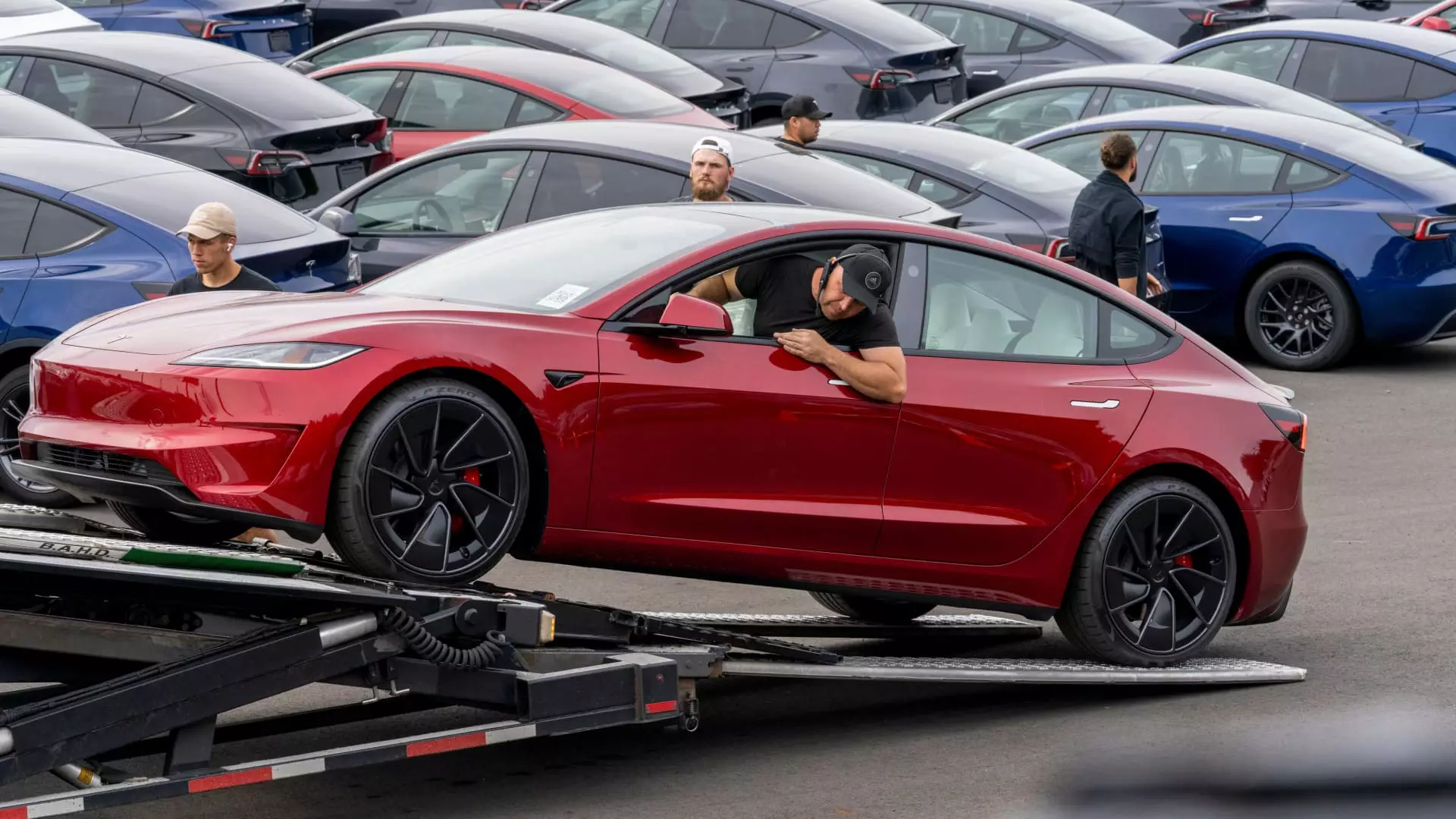Tesla’s recent report on its vehicle production and deliveries for the third quarter of 2024 presents a mixed bag of insights into the company’s operational performance. While Tesla managed to produce a total of 469,796 vehicles and deliver 462,890 of those during the quarter, the results came in below market expectations. Analysts had predicted Tesla would achieve 463,310 deliveries, a forecast seemingly grounded in the company’s consistent growth patterns over previous quarters.
This quarter’s performance marked a notable rise from the same period the previous year, during which Tesla reported 435,059 deliveries and 430,488 vehicles produced. However, the slight uptick in numbers over prior quarters raises concerns about the sustainability of growth in the face of rising competitive pressure within the electric vehicle (EV) market.
The landscape for electric vehicles is shifting rapidly, with substantial competition emerging from both incumbents and new entrants. Chinese manufacturers such as BYD and Geely are putting significant pressure on Tesla’s market share, while electrification efforts are gaining momentum among established automotive giants like Ford and General Motors. Notably, GM has reported a staggering 60% increase in its EV sales for the third quarter, hinting at the potential for legacy automakers to make significant strides in the EV sector as they adapt to the changing market dynamics.
Internally, Tesla faces challenges in maintaining its competitive edge as newer players like Rivian, Li Auto, and Nio carve out their niches in a market that has quickly become saturated. The entry of these competitors raises questions about Tesla’s future growth, especially as it confronts increasing production costs and the need to innovate continuously.
In the wake of the quarterly report, Tesla’s stock experienced a notable decline, falling by as much as 3.7% on Monday morning after the release. While the stock did rally by 32% in Q3, thereby regaining some ground from earlier losses in the year, it nevertheless underperformed compared to the overall market. The stock is reported to be up nearly 4% year-to-date, but this lags significantly behind the Nasdaq’s robust 19% growth.
The stock market’s reaction can be attributed to investors’ concerns about Tesla’s slowing delivery growth rate. Prompted by the company missing its delivery projections, investors are now acutely focused on upcoming earnings reports, specifically regarding profit margins. The company has been aggressive with incentives and financing options to spur sales, but reliance on these tactics might indicate underlying challenges in demand that could be worrying.
Tesla’s stronghold in the U.S. EV market remains significant, with the automaker still selling more battery electric vehicles than its competitors. However, the brand’s prestige has taken a hit due to the controversies surrounding its CEO, Elon Musk. His public persona, often characterized by polarizing statements and actions, has drawn significant media attention. Musk’s endorsement of divisive political figures and controversial opinions shared on his social media platform have the potential to alienate consumers and investors alike.
As the company moves forward, its ability to separate its brand from Musk’s controversies may prove critical in maintaining consumer trust and fostering brand loyalty. Continuous performance in EV sales could hinge on how well the company navigates these public relations challenges while endeavoring to capture a broad demographic of customers.
Despite the challenges, Tesla remains focused on innovation, as evidenced by the anticipation surrounding its October marketing event and the expected unveiling of the “dedicated robotaxi.” Tesla executives have commented on the possibility of lower growth rates for 2024 due to increased competition and market saturation, though the company plans to leverage the introduction of the angular Cybertruck to invigorate interest among consumers.
Moreover, the deployment of 6.9 GWh of energy storage products this quarter indicates that Tesla is not solely reliant on vehicle sales but is also diversifying its portfolio. This strategy could serve as a cushion against potential volatility in the automotive sector as they continue exploring new revenue streams amidst rapidly changing market demands.
While Tesla has established itself as a formidable player in the electric vehicle landscape, its future success will depend on its ability to innovate, navigate competitive pressures, and manage public perception. Addressing these multifaceted challenges will be paramount as the company seeks to sustain its market dominance in an increasingly crowded field.


Leave a Reply
You must be logged in to post a comment.